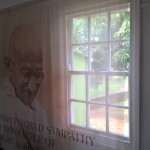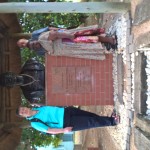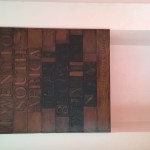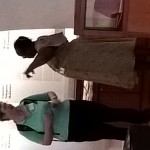23. April 2016
On the Inanda Heritage Route
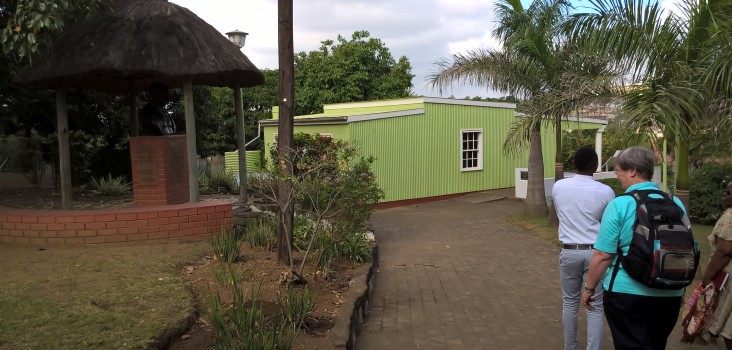
Inanda ist a part of Durban Metro Munucipality in the North of the city, in a distance of about 25 km. It’s a lively, sometime violent area, as many people for other parts of the province found a first place near Durban in the past, but also today. Inanda is part new township called INK (Inanda, Ntuzuma, KwaMashu). Round about 600,000 citizens are living in INK. Inanda is the oldest of the areas, established in the 1900s, KwaMashu was established between 1955 and 1966 and Ntuzuma was built in the 1970s.
In the past an important part of resistance again the political and social injustice and the rasism under the name Apartheid started in the area of Inanda. The tourism office of Durban (www.durbanexperience.co.za) installed the so called Inanda Heritage Route which connects many place of political and cultural heritage. Three of these places Elke and me visited yesterday together with our good friend and host Rhosta Gcaba.
The first place to see was the Phoenix settlement, which “was foundes by Gandhi in 1904 after he visited the Trappist community at Mariannhill and read John Ruskin’s “To This Last”. Phoenix represented a belief in the equality of all labour, the value of manual work and a simple life communal lifestyle. The newspaper INDIAN OPINION was printed at Phoenix until its closure in 1961. Throughout its long history, Phoenix Settlement has always been at the forefront of struggle for justice, peace and equality. … During the “1985 Inanda Riots” much of the settlement was burnt to the ground, but after 1994 it was carefully reconstructed. Gandhi’s house Sarvodaya, the printing press building (today a community clinic), and the Phoenix Interpretation Centre all form part of the Phoenix Settlement.”* We have been happy to put our feet in the reconstructed home of Mahadma Gandhi, which I had the advantage to see in its original surface when I had been here during my first South-Africa-visit in the year 1980.
Second place to visit on the tour was the Zulu Christian Industrial School, which “was founded by John Dube in 1900. John Dube fundraised in the United States for the school he intended to start in Natal.”* John Dube became the first president of the African National Congress (ANC) later on. The school “produced” a large number of well-known people which became very important for the struggle for freedom and for the change and the empowerment of the majority of people in the 1990s. Highlight on this place was to see the place, where Nelson Mandela voted in the first democratic election in 1994.
The last, but most important visit was to the “Inanda Seminary for Girls, which was the first school of this kind for black girls in southern Africa. Daniel and Lucy Lindley, American Board missionaries based at eNanda, (…) opened the school in 1869. There were 19 students, all of them boarders.”* The most important: Rhosta Gcaba and her older sister Beauty Msomi once studied in this school. So Rhosta was able to give us information first hand: Sad moments and happy moments, moments of success, moments of taking care for others. This made us able to understand the importance of this place for the education of generations of black women.
*Taken from: Durban City Guide: Inanda Heritage Route

